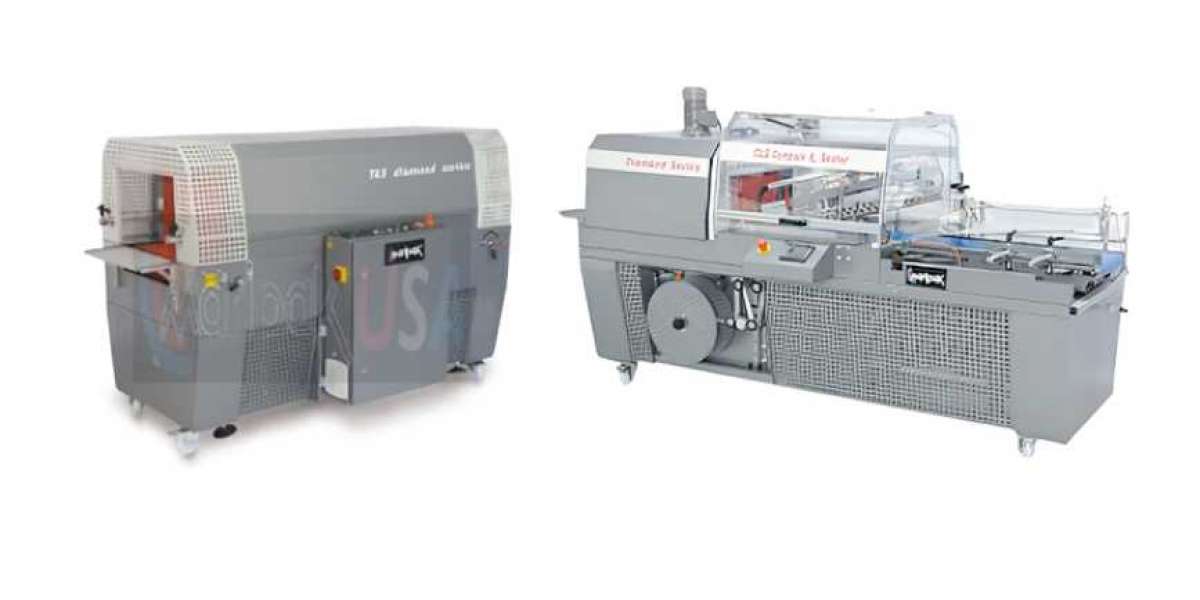Investing in a shrink film wrapping machine can significantly streamline packaging operations, but selecting the right model requires careful consideration of your production needs. Two of the most important factors to evaluate are your weekly throughput and the variety of products being packaged. Matching the machine’s specifications with these requirements ensures long-term efficiency, consistency, and cost-effectiveness.
This guide will walk you through how throughput and product variety impact your machine choice and what other features to consider to get the best return on investment.
Why Weekly Throughput Matters in Machine Selection
Throughput, or the volume of products wrapped over a specific period, is a key metric in determining the right shrink wrapping solution. Companies with high weekly output need robust, fast, and durable machines, while smaller operations can benefit from compact, semi-automatic units.
Low-Volume Production (up to 2,000 units/week)
For businesses with smaller output, such as local bakeries or boutique manufacturers, a semi-automatic shrink wrapper may be ideal. These machines provide quality sealing without the complexity or cost of high-speed systems. Operators manually place products, which gives them more control but limits speed.
Mid-Volume Production (2,000 to 10,000 units/week)
In medium-scale operations, time becomes a more pressing concern. Here, automatic L-bar sealers and shrink tunnels offer a balance between speed and efficiency. These machines can handle moderate loads without requiring constant operator input, freeing up labor and maintaining consistency across batches.
High-Volume Production (10,000+ units/week)
If you're packaging tens of thousands of units each week, investing in a fully automated shrink film wrapping machine is essential. These machines offer advanced features such as conveyor systems, photo-eye detection, and precise sealing mechanisms to support continuous, high-speed operations. Choosing a machine with a proven track record, such as those offered by Maripak USA, ensures reliability under demanding workloads.
How Product Variety Influences Equipment Configuration
The next major factor is the variety of product shapes, sizes, and materials. A packaging line that handles a single SKU will have different needs than one that wraps various goods daily.
Uniform Product Lines
Suppose your business packages one or two standardized products; a dedicated system with fixed settings is a smart choice. You can set up the machine once and allow it to run with minimal adjustments, improving speed and reducing operator error.
Diverse Product Range
For companies packaging a wide assortment of goods from boxed items to oddly shaped or fragile products, machine flexibility becomes crucial. Look for models that allow easy adjustment of sealing bar width and tunnel temperature, and consider features like programmable settings or tool-less changeovers. The goal is to minimize downtime while maintaining quality across varying package dimensions.
Understanding the Role of Heat Sealing Machines
A heat sealing machine is the core component of a shrink wrap system. It creates a tight seal around the product before heat is applied to shrink the film. There are several types of sealers to consider, depending on your operational needs.
Impulse Sealers
Common in low-volume settings, impulse sealers use a brief pulse of electricity to seal film and are typically used in manual operations. They’re suitable for small-scale packaging but are not ideal for faster-paced environments.
Constant Heat Sealers
These are better suited for medium to high-volume applications. Constant heat sealers maintain a consistent temperature and can operate at higher speeds. Their reliability makes them ideal for integration with automatic or semi-automatic shrink wrappers.
L-Bar Sealers
These machines seal two sides of a package simultaneously and are popular in mid- to high-volume settings. L-bar sealers are compatible with a range of films and are typically paired with shrink tunnels for a complete packaging solution.
Regardless of the sealer type, consistent heat and clean-cut sealing are critical to avoid weak seals or excessive film use, both of which increase packaging costs.
Additional Considerations Before You Buy
While throughput and product variety are the top priorities, a few additional factors should influence your decision:
- Available floor space: Larger machines may need more room for conveyors and operator access.
- Film compatibility: Ensure the machine works with the type of shrink film you use (PVC, polyolefin, or polyethylene).
- Operator training: Simpler machines may require less training, while advanced systems often need skilled personnel.
- Maintenance and service: Choose a supplier with good technical support and available spare parts.
These factors affect long-term usability and ensure your machine continues to meet your packaging needs as your business grows.
Final Thoughts
Choosing the right shrink film wrapping machine isn’t just about buying the fastest or most advanced model; it’s about aligning the machine with your production needs and product types. Whether you're packaging 500 or 50,000 items per week, the right equipment will improve packaging speed, reduce material waste, and ensure a polished final product. Ultimately, selecting a machine that integrates seamlessly with your heat sealing machine guarantees optimal performance and consistent packaging results.







